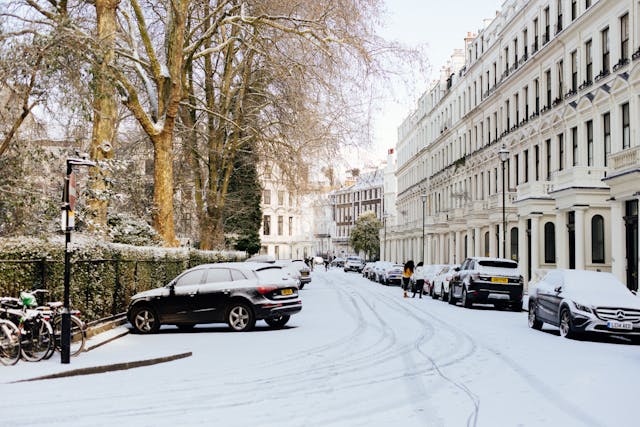The extreme winter conditions take a toll on the parking spaces if they don’t prepare for the season. Freezing temperatures result in potholes and cracks, and snow causes moisture damage. Winter storms are dangerous as the pavements get damaged due to hail storms and strong winds. Such conditions make the parking lot unsafe for pedestrians and drivers. However, parking lot winterization is critical in guaranteeing the safety of winter hazards. Staying prepared for seasonal hazards is an essential aspect of optimal parking management. The article highlights the tips for winterizing the parking spaces.
Sealing the Cracks
A simple parking pavement crack turns into big craters, cracks, and hazardous potholes. Sealing the cracks guarantees rainwater and snow don’t penetrate the pavement subgrade. It is a cost-efficient yet effective way to prevent seasonal hazards from making a mess. If done routinely and adequately, asphalt sealing extends the durability of the parking lot pavements. Cracksealing is most effective during warm temperatures. So, parking lots should schedule sealing the cracks before the freezing winter sets in.
Repairing or Patching the Potholes
Patching or repairing the parking lot potholes is critical for optimal winterization. The repairing methods depend on the ways to address particular pavement issues. Three categories of pothole-repairing methods include:
Primary Pothole Patching
It is the most cost-effective solution because the patching doesn’t last more than a year.
Mill Patching
It is a versatile, eco-friendly, and inexpensive approach used to patch the superficial damage of the pavement surface, like ruts, shallow potholes, and cracks. Milling machinery repairs the damage, and the method levels the uneven surfaces.
Dig-Out or Full-Depth Patching
It is a more comprehensive and expensive solution, ideal for repairing extensive and deep pavement issues. The method eliminates and replaces damaged pavement sections with a new appearance.
Cleaning and Sealcoating the Parking Lot Pavement
Debris and dirt corrode the parking pavements when left unaddressed throughout the winter. Dry leaves and tree branches clog drains and gutters, establish dams, and improper drainage leads to snow and ice accumulating on the pavement surface. After meticulous cleaning, applying a seal coat is the best solution before the freezing winter condition sets in and causes damage.
Sealcoat offers an extra protection layer on the pavement surface against hazardous elements of the season. A high-quality and properly applied seal coat safeguards UV damage, water infiltration, and oxidation of the surfaces. It extends the life of the pavement surface and eliminates the need for expensive repairs.
Assessing lighting and signage
With fewer daylight hours and early sunsets in winter, sufficient lighting becomes critical for maintaining safety. The visibility is already low due to snow and fog. So, it is even more important to check if all the lights in the parking lot are in optimal working condition. In addition, digital signage and the standard ones should be under inspection throughout the parking space as they contribute to safety during winter. Having proper illumination and good signage reduces the chances of accidents. Inspecting or checking lighting and signs is a critical aspect of parking lot winterization.
Incorporating Yearly Parking Lot Assessment
Besides immediate repairs and patching, self-evaluating the parking lot condition is a good initiative. Practicing an annual or yearly parking lot evaluation gives valuable insight into the parking lot condition. In addition, it helps to prioritize the long-term patches and repairs and plan the budget more effectively. Seeking professional assessment from professional pavement experts is a more practical option because they can identify areas that need repairs or hazardous surfaces for vehicles and pedestrians.
Fall is ideal for budgeting for long-term parking lot patches and repairs. The standard parking lot problem areas are potholes, rutting, pavement surface cracking, settling or heaving, oxidized pavement surfaces, and faded paints. If left unaddressed, they result in expensive and extensive damage.
Conclusion
Having an optimized parking lot management ensures parking lot winterization. Winters are nasty for slippery pavements due to snow and hail storms. Accumulating snow and debris on the parking pavements contributes to multiple other problems, leading to extensive damage and costly repairs. Parking lot winterization plays a significant role in preventing accidents and assuring the safety of pedestrians and vehicles.


